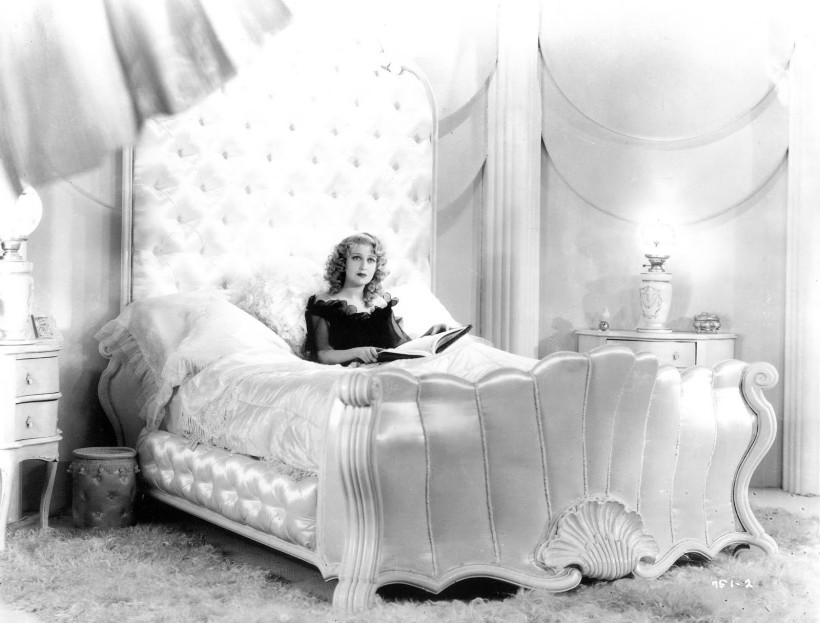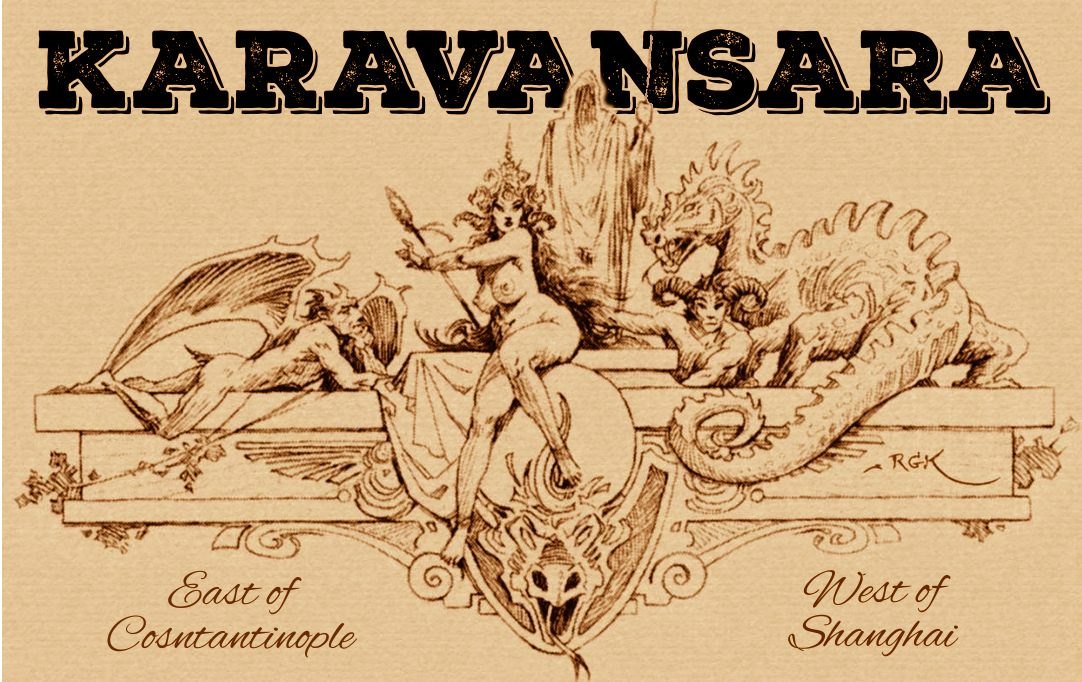 I’ve been invited to contribute to The Singing Sweethearts Blogathon, dedicated to the movies of Jeanette MacDonald and Nelson Eddy.
I’ve been invited to contribute to The Singing Sweethearts Blogathon, dedicated to the movies of Jeanette MacDonald and Nelson Eddy.
The blogathon was set up by Rebekah Brennan, co-founder of the Pure Entertainment Preservation Society blog, and you can point your browsers in that direction to check out the full list of participants and read a number of great articles on the movies of MacDonald & Eddy, both together and on their own.
And once you’re done, come back here, because we are about to take a waltz with The Merry Widow.
Curious how I’ve been talking about operettas here on Karavansara recently, and now I find myself writing about The Merry Widow, isn’t it?
I’ll take a rather circuitous route here.
My mother was born in 1938, and in her teens she became addicted to the movies. Post-war Italy was being flooded by all those movies that during the previous twenty years had been banned due to the Fascist Regime, and my mother spent her afternoons at the local cinema, the Colosseo, watching 1930s westerns and swashbucklers and melodramas and, most of all, musicals. She saw all the old Astaire & Rogers films, and the Busby Berkeley extravaganzas and one of her favorite actresses was Jeanette MacDonald, and The Merry Widow was one of her favorite movies.

I am pretty sure my first exposure to operetta and to Franz Lehar’s works in particular was through this movie and the later version featuring Lana Turner. My mom would debate at length the pros and cons of the two versions.
 What are we talking about: a complicated game of courtship and counter-courtship, the story follows the attepts of Baron Zeta, ambassador of the Balkan state of Pontevedro, to arrange a marriage between a rich widow, Hanna Glawari, and Count Danilo Danilovitsch. The reason: to keep Glawari’s assets in Pontevedro, thus solving the monetary problems of the state. A pity Danilo refuses to marry the widow, and she’s too happy to be her own woman.
What are we talking about: a complicated game of courtship and counter-courtship, the story follows the attepts of Baron Zeta, ambassador of the Balkan state of Pontevedro, to arrange a marriage between a rich widow, Hanna Glawari, and Count Danilo Danilovitsch. The reason: to keep Glawari’s assets in Pontevedro, thus solving the monetary problems of the state. A pity Danilo refuses to marry the widow, and she’s too happy to be her own woman.
But this being Paris at the turn of the century, things get much more complicated: misunderstandings, mistaken identities and lovers bickering, and of course songs and dances, carry the story forward to the happy ending.
 This, at least, in the original Lehar operetta, that premiered in 1905. Lehar and his librettists were responsible for the image many of us still hold, of the Austro-Hungaric Empire as a place of waltz and military marches, with men in extravagant uniforms and women in even more extravagant dresses.
This, at least, in the original Lehar operetta, that premiered in 1905. Lehar and his librettists were responsible for the image many of us still hold, of the Austro-Hungaric Empire as a place of waltz and military marches, with men in extravagant uniforms and women in even more extravagant dresses.
Now, for the uninitiated, operettas have a different standing compared to proper operas – and while only an uncouth madman would propose to translate and adapt an opera like Tosca or Boheme, operettas were routinely translated and adapted to be performed in other countries.
And when Die lustige Witwe came to England and became The Merry Widow, a number of changes took place: Danilo got a raise from count to prince, Hanna became Sonia and various other characters changed names. The main problem behind these changes being that Lehar’s Pontevedro was a little too close to factual Montenegro, and many characters had names similar to those of members of the Montenegrine court. Just to play it safe, the name of the Balkan nation was changed to Marsovia.

And the place turned into Marshovia for the Ernst Lubitsch production of 1934, featuring Jeanette MacDonald in the role of Sonia, and Maurice Chevalier as prince Danilo, with song texts by Rodgers & Hart. The plot was further modified, as womanizing Prince Danilo was sent to Paris to court, seduce and marry the merry Sonia, so that she would keep paying taxes in Marshovia, fueling the national economy.
And talking about fueling the economy, MGM invested over one million and a half dollars, making The Merry Widow the most expensive musical ever filmed at the time,and the most expensive MGM feature. The expenses were justified by a lavish production that featured over twenty-five costume changes for MacDonald, deployed 500 extras and required a set illuminated by one thousand gas chandeliers.

The Code guys were obviously nervous – this was after all a story of seduction and mad shenanigans, that included a merry widow, a womanizing aristocrat, and a final number chez Maxim, the most notorious night club in Paris (the sinful city par excellence). Cuts were required, and reshoots. In particular, in a scene in which Chevalier carried bodily MacDonald to a couch and then sat by her side, the actress had to find a way to keep both feet on the ground while laying on the couch, to avoid… something. The Code guys would not accept it any other way – a woman and a man, sitting on a couch together, were clearly up to no good, unless she had both her feet firmly on the floor.
How things have changed!

And it was a disaster – earning in the US of A about half of the cost. Unheard of for a Lubitsch movie, or for a MacDonald & Chevalier vehicle.
The reasons behind this are various. It’s been noted that MacDonald and Chevalier, at their fourth movie together, were not getting along – and indeed they have no singing scenes together, and apparently avoided each other off-set.
Or maybe the public was tired of musicals, or felt little empathy for a story that was by now almost thirty years old.
In the end, apart from the monetary loss, it was Maurice Chevalier, at the time one of the highest paid stars in Hollywood, that was hit hard by the flop of The Merry Widow. He returned to France in 1935, and did not come back until after the end of the war.

And yet the movie is regarded by many as one of the best musicals from the pre-war years, and certainly the best of the four MacDonald & Chevalier movies.
It remained in circulation for many years, until the 1952 Lana Turner adaptation of the Lehar operetta was produced – to avoid confusion and competition, both the Lubitsch Widow from 1934 and the Von Stroheim far racier 1925 adaptation were shelved.
It is still a movie worth checking out, if nothing else for the voice of Jeanette MacDonald and for the fine supporting cast of comedians.
Granted, the original Lehar operetta is another thing, but this one makes for a fine substitute.

Pingback: Ring the Assembly Bell! The “Singing Sweethearts Blogathon” Has Arrived! | pure entertainment preservation society
Pingback: Ring the Assembly Bell! Here Comes the Singing Sweethearts Blogathon! | pure entertainment preservation society